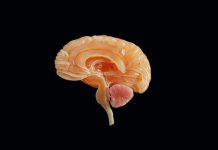
In a new study, researchers have discovered new changes occurring in the human brain in the early stages of Alzheimer’s disease.
The researchers drawing on data from a Finnish biobank of brain tissue samples.
They used a multiomic approach to determine RNA, protein, and phosphorylation levels and carried out further neurobioinformatic analyses on them.
The study was conducted by the University of Eastern Finland.
Alzheimer’s disease is the most common neurodegenerative disease, which is strongly characterized by the accumulation of beta-amyloid peptide and hyperphosphorylated tau protein in the brain tissue.
In order to find new predictive biomarkers and targets of treatment for Alzheimer’s disease, it is crucial to identify accumulation-induced early changes in the brain.
Plenty of research has been conducted into changes occurring in the RNA expression of genes in the brain of people with Alzheimer’s disease.
But very few studies so far have focused on the entire proteome covering the entire set of the proteins expressed in cells.
In the new study, the researchers used data available in a unique Finnish biobank of brain tissue samples, where samples are categorized according to the accumulation of phosphorylated tau protein, representing the different stages of Alzheimer’s disease.
The team carried out a genome-wide analysis of the samples for changes in RNA, proteins and protein phosphorylation, and conducted neurobioinformatics analyses.
The researchers managed to demonstrate associations of functional changes in certain brain cell types with Alzheimer’s-related accumulation of phosphorylated tau protein.
They also showed that machine learning can be used to classify patients into different stages of disease pathogenesis merely by looking at changes in the expression of a selected group of genes.
Further research will focus on exploring whether the newly discovered brain changes in the different stages of the disease are also visible in cerebrospinal fluid and blood samples and whether these could also be used as new predictive biomarkers of Alzheimer’s disease.
Furthermore, the changes discovered in the early stages of the disease open up new avenues for potential targets of treatment for Alzheimer’s disease.
The new study was carried out in collaboration between the University of Eastern Finland and the UK-based Proteome Sciences Plc.
The findings are published in Neurobiology of Disease.
Copyright © 2018 Knowridge Science Report. All rights reserved.
Source: Neurobiology of Disease.



